My visit to the Saint Laurent Wildlife Park
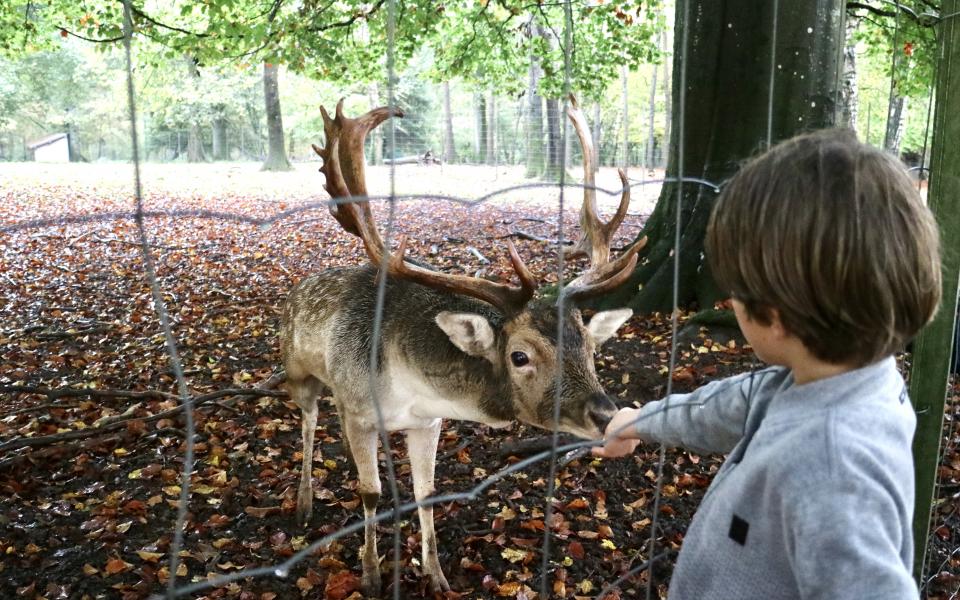
When I think of the French Ardennes, I think of beautiful landscapes, forests, picturesque towns and, of course, the River Meuse. But after our visit to the Saint Laurent wildlife park, I now also think of the animals that live there. I prefer watching these animals, like deer, in the wild. But that’s not easy, especially when you’ve brought three children along who tend to make themselves clearly heard when they’re in the great outdoors. Luckily there are parks like Saint Laurent, where the animals can live in reasonable freedom while you as a visitor know exactly where to look for them. So this is an excellent wildlife park for getting to know the animals of the French Ardennes.
The city of Charleville-Mézières
Before we visited the animal park of Saint Laurent, we dropped into Charleville-Mézières, the biggest city in the French Ardennes. If you like ‘pretty buildings’, as a child might put it, then Charleville-Mézières is the place to be. Given the short time available, we focussed mainly on the most beautiful spot in the town, Place Ducale. This is also noted as the twin of Place des Vosges in Paris, which is not that surprising since the same architect created both gems. We took in the beauty of this square and the fountain at its centre, the perfect spot. And then suddenly pink umbrellas hanging in a side street off Place Ducale caught my children’s eyes. We had no choice but to capture this artistic scene on film.
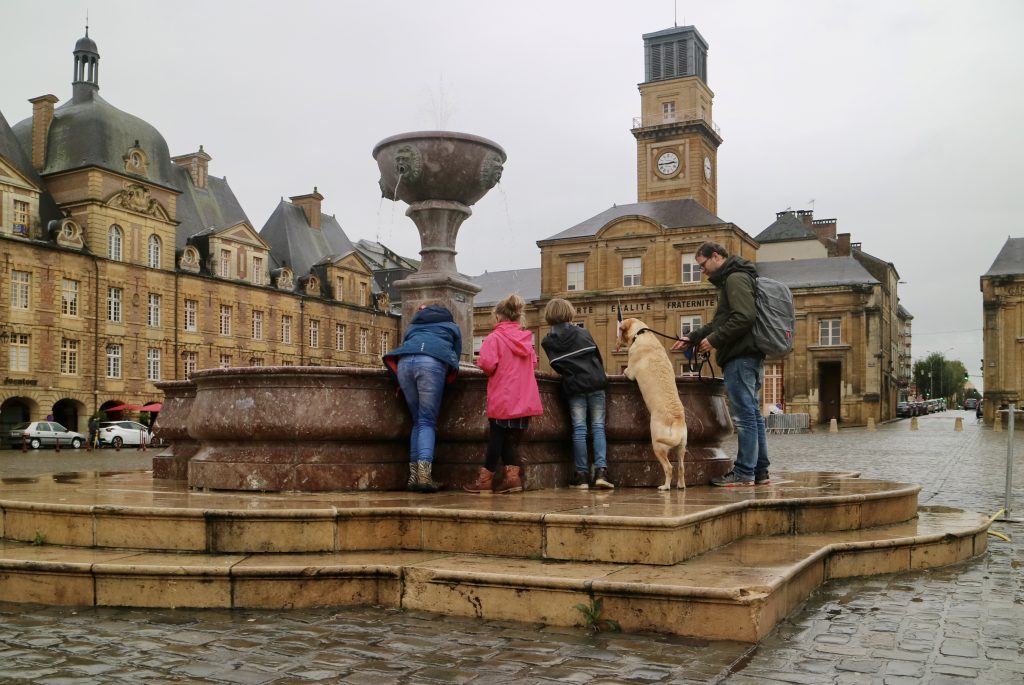
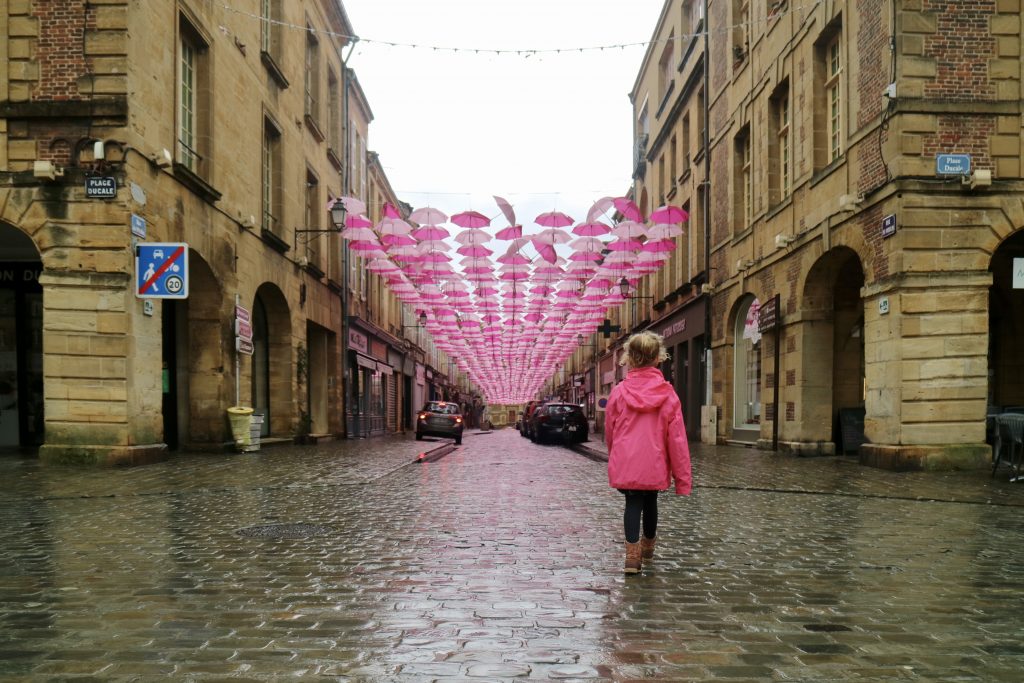
The Place Ducale has all kinds of cosy restaurants, whose terraces shelter under arcades, so you can enjoy a drink and snack even in rainy weather. We still had half an hour before going on to the next highlight of the city. This we spent looking for a nice pastry shop under the arcade. After a pastry and a drink, it was time to walk on. The next highlight was near the Place Ducale.
We most certainly wanted to see Le Grand Marionnettiste with the children. Part of an Ardennes legend is played out every hour in the belly of this giant puppeteer. We went to see it in the middle of the day and the children really had no idea of what was going on, but it was beautiful to watch. I reminded myself that on our next visit we should spend more time experiencing this puppet culture. Every two years Charleville-Mézières hosts the World Festival of Puppet Theatres, a great event in the world of puppetry, and an excellent time for a return visit.
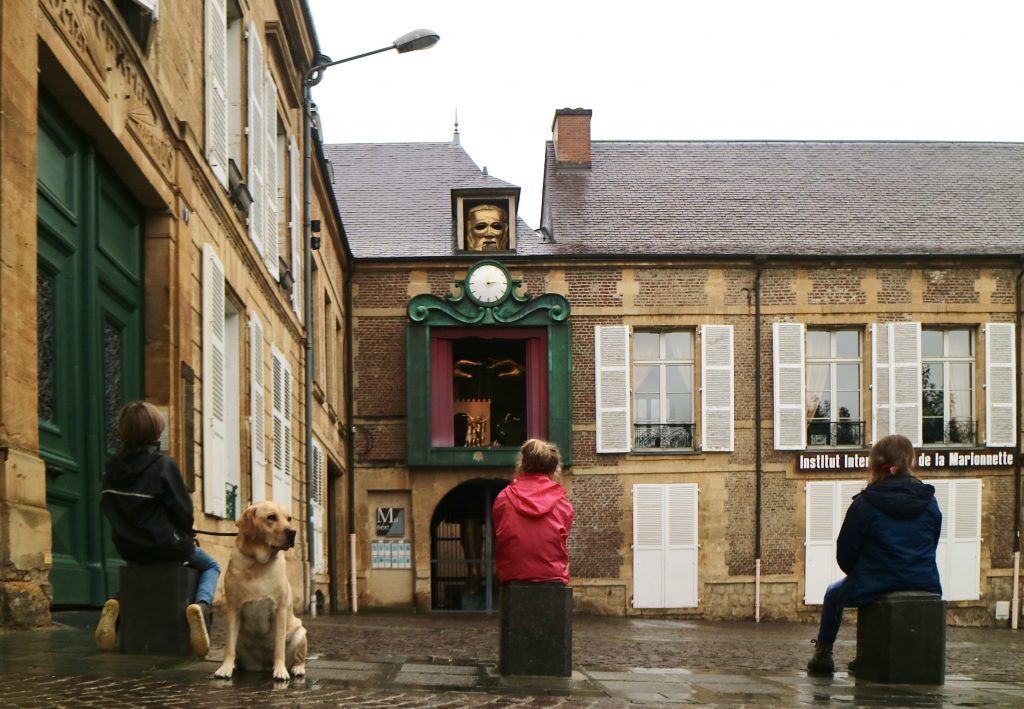
We walked back to our car, said goodbye to Charleville-Mézières and set off for the Saint Laurent wildlife park. It is situated between Aiglemont and Saint-Laurent, about a fifteen-minute drive from Charleville-Mézières. The weather in the French Ardennes was still a bit drizzly when we reached the large car park where there were only a couple of cars. That meant the park wouldn’t be crowded. Dogs are not allowed in, so we left ours in the car, but she didn’t seem to mind that much and took advantage of the opportunity to finally take a nap.
Our animal lover
The wildlife park of Saint Laurent has an area of 38 hectares and admission is free. The animals live in groups of their own species in large spaces and enjoy semi-freedom. In the park there are three different trails around the areas where the animals live. The nice thing about this park in the French Ardennes is that most of the animals come from the Ardennes itself or from the park’s livestock breeding programme, so you really get to know the animals of the Ardennes a bit better. The animals living in each enclosure are identified, along with some extra information about them. This is something my children are happy to find, as they are true animal lovers. I especially notice this with my son. I regularly say, “I’ll be very surprised if you don’t become a veterinarian or something like that later on”. For instance, the natural connection he has with our dog is truly magical. He has also been asking for a bird for years, one he can take care of and teach things. This wish goes back years to when he was a toddler on a camping holiday. We were walking around a French market, when he came face to face with a very cute chick. “Mum, can I have this chick?” I couldn’t see any way that we could look after that tiny creature in our tent. But his pleading voice and big puppy eyes compelled me to say we would have a look for a bird once we were back home. He hasn’t forgotten that to this day. He really always finds a friend, a buddy in an animal, so we’re still thinking about it. But for now he has to make do with a visit to the zoo. Happily, a walk through the wildlife park of Saint Laurent is fantastic for him as well. Especially since we’ve been given a bag of stale bread to attract and feed the animals.
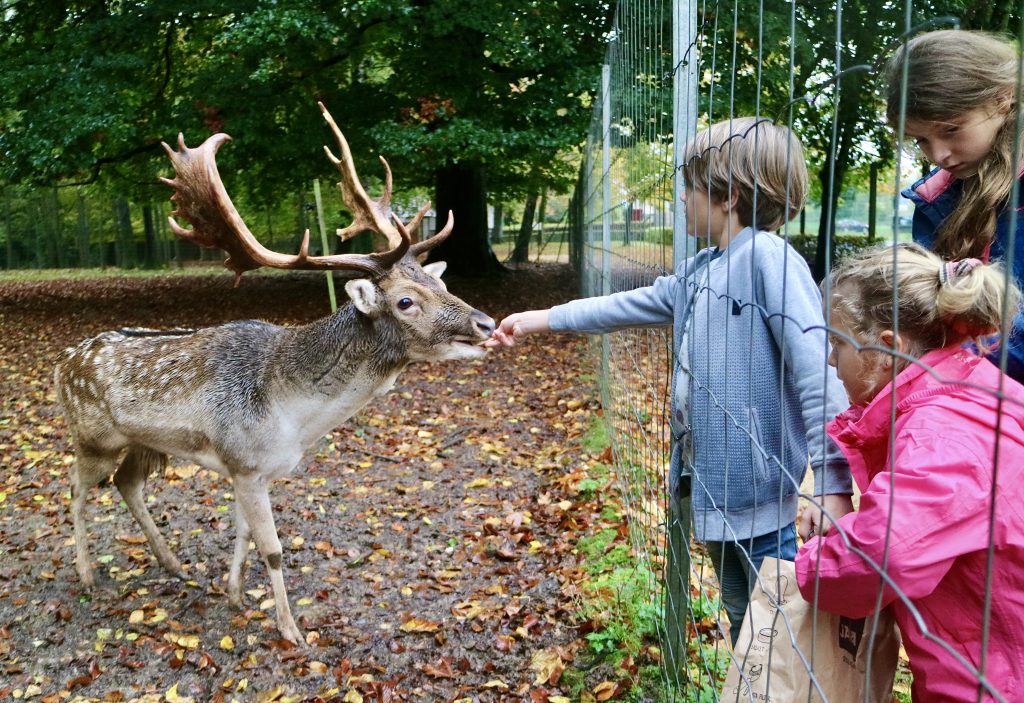
Three walking routes
The park, which could also be called a nature reserve, was established in 1976. Every year it welcomes between 50,000 and 60,000 visitors, making it one of the most visited tourist attractions in the Ardennes. Visitors can choose between three different walking routes. These are marked out with blue, yellow and red signs. The red route is the shortest at 1.4 kilometres. The blue route is 1.5 kilometres. The yellow route takes you past all the animals in the park and is 2.3 kilometres long. There are two observation posts along the route. We took the yellow route as it is the longest and because we wanted to see everything. As we are in the French Ardennes, the route is not completely flat. So it’s a good idea to allow yourself a little more time if you choose the longest route.
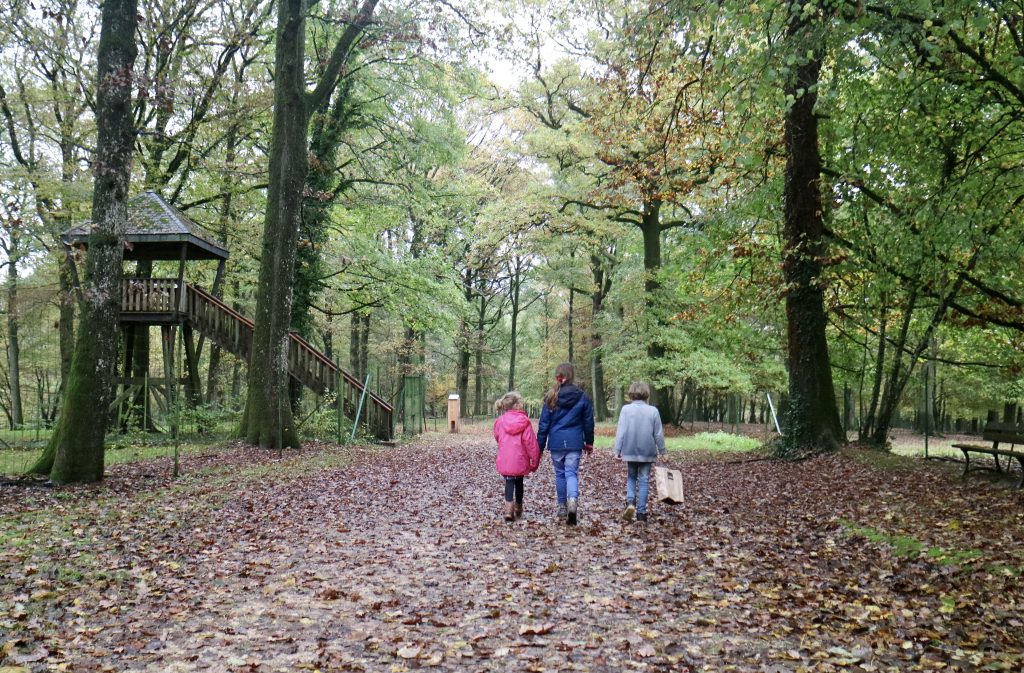
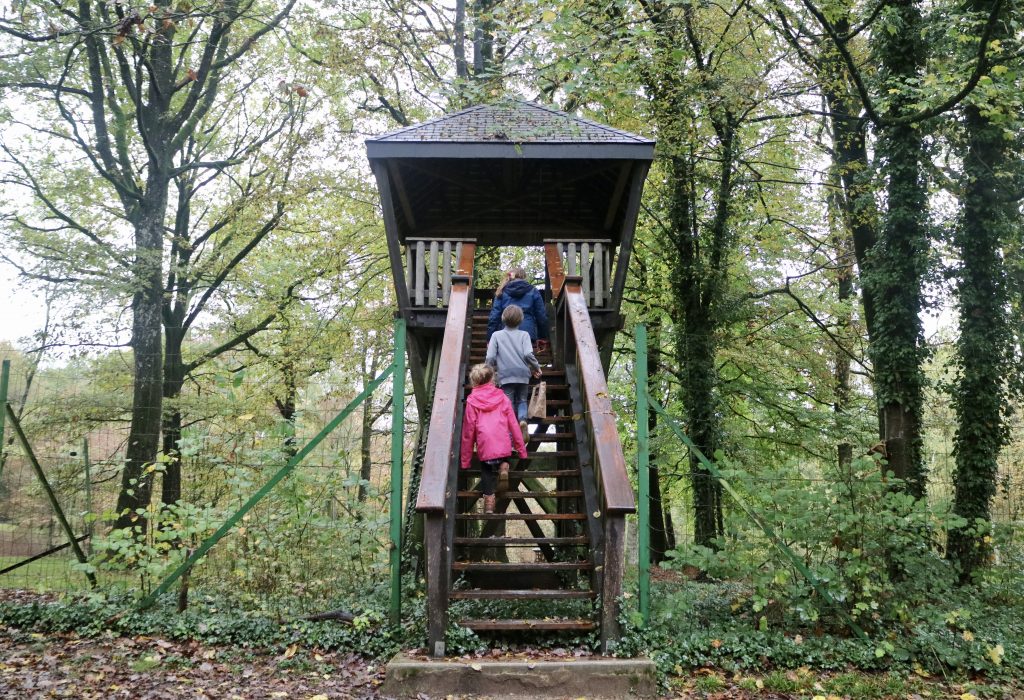
The animals in the park at Saint Laurent are representative of the wildlife of the Ardennes. There are mainly deer, but also wild boar, mouflons and birds like chickens, peacocks and pheasants. Deer are always adorable to see and red deer look magnificent. It is unsurprising that these animals with their innocent eyes immediately appealed to my children. It was not only the deer that grabbed their attention; the wild boars got some too and they sure knew how to wheedle lots of bread out of my children. Animal happy hour! The wild boars are really wild too, my youngest noted. They ran about a lot, but seemed to be winding each other up too. “They must be brothers and sisters”, I told my children, who also regularly get in each other’s hair.
My sheepy past
But my favourite animal of the park is the mouflon. Maybe that’s because of my own ‘sheepy life’. I grew up in the so-called ‘countryside’ in a house surrounded by farmland. My parents had a nice piece of land where two or three sheep grazed every year. Of course, there were special moments like when a lamb appeared, or when the farmer came to shear the sheep. I can still hear their bleating when I think back. In any case, as a child I always found it fascinating, even though the sheep always ran away from me. But the mouflon is a wild sheep. Their heads are about the same as our sheep, as I remember, but the mouflons have horns that curl backwards around the ears and can be as long as 85 centimetres! The bigger the horns, the older the sheep. That was good to know when we met the animals in the wildlife park. So which one of the herd is the oldest? It’s also interesting to know that the mouflons didn’t originally come from the Ardennes. They originate in Corsica and Sardinia. Humans subsequently took mouflons to various parts of Europe. The Dutch Veluwe has mouflons in fenced areas as well. The animals can also be found in Sauerland and therefore in the Ardennes too. They are shy animals by nature, but when we came along with our bread bags, there wasn’t much shyness about them. They eagerly ate up the last breadcrumbs from our hands.
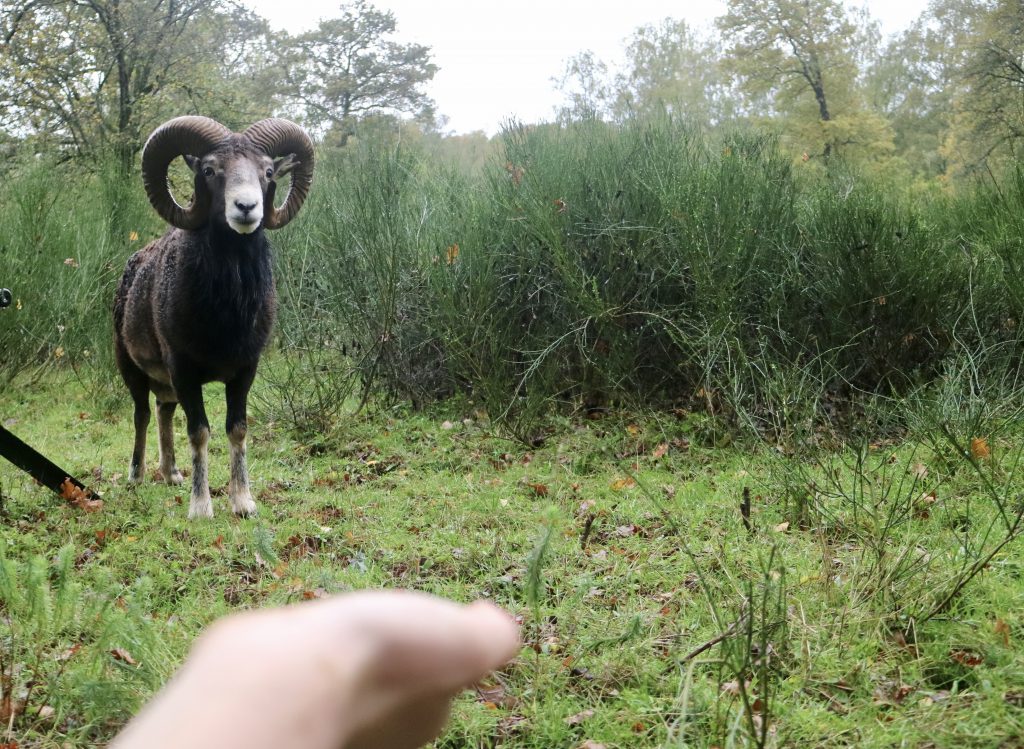
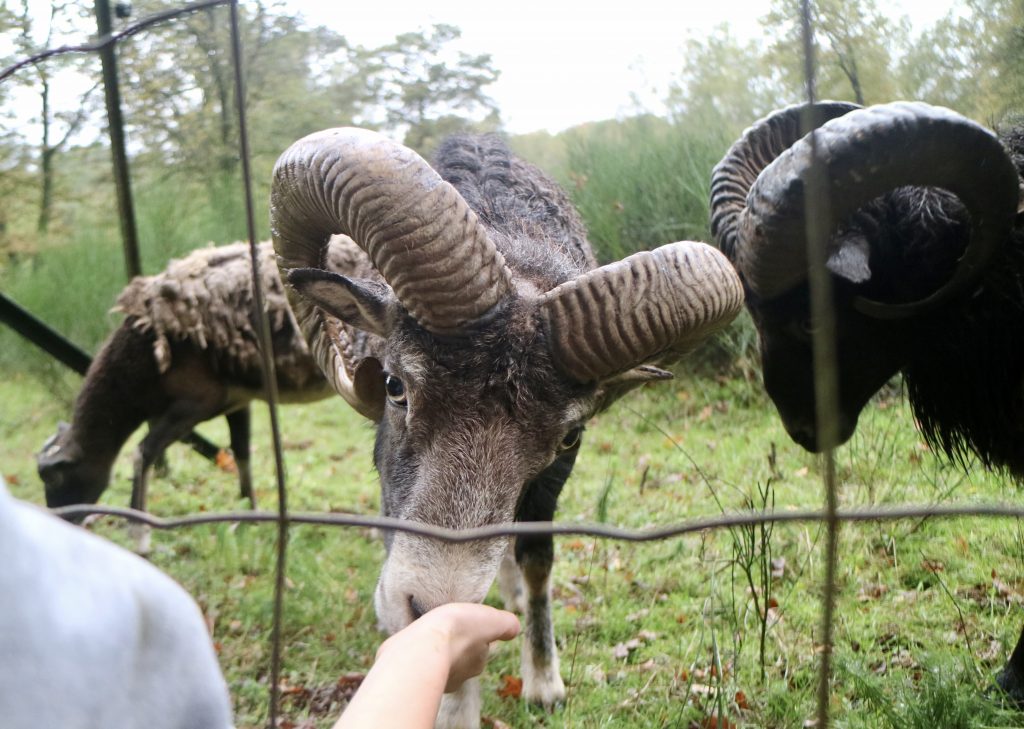
Save the bee
We regularly came across beehives on our trip to the French Ardennes. The owner of our B&B had a number of hives in his large garden, and we spotted a large row of hives on our visit to the castle of Sedan. By now we should all know that bees are not doing so well. The ‘Save the bee’ song by Dutch choir “Kinderen voor Kinderen” regularly echoes through the speakers at our house. But why are bees and similar insects so important? As far as my kids know, they make honey and that’s something they don’t like anyway, so what does it matter? So a lesson on why bees are important was in order. Pollination by insects is important and even necessary for more than 75% of food crops. Fruit like cherries, apples, blackberries, raspberries and mangoes, for instance. But pollination is also important for vegetables like courgettes, peppers and avocados. Without the bees, these would disappear. ‘Why is that so bad?’ you might ask yourself. After all, we still have grains and grasses that are pollinated by the wind, so there is still enough food left. Therefore, we don’t have a maximum of four years to live if the bees disappear from the Earth, as Einstein once claimed. Which, by the way, is an invented statement that people keep on repeating. We regularly came across insect hotels on our walk through the wildlife park at Saint Laurent. So what’s an insect hotel like that good for? Although you may often think of bees as the most important pollinator, there are other insects that pollinate as well. In addition, an insect hotel naturally looks very interesting. A nice extra attraction on our walk through the park.
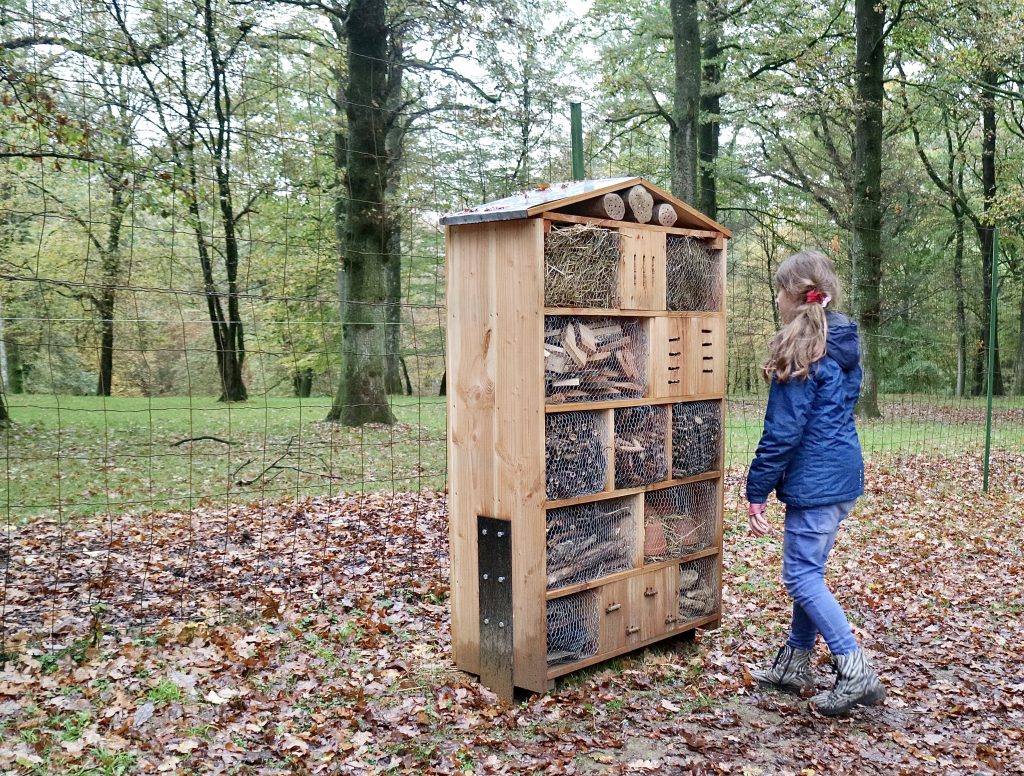
Coming almost back to the beginning of the route, the animals were suddenly nowhere to be seen, which shows that they do indeed have a large area to live in. At least they couldn’t be spotted any more from the path we followed. The drizzly weather had started to turn into rain, so perhaps the animals had retreated to their shelters. Very understandably! We too went back to the car to take shelter, where we found our own sleepy, but dry creature.



Really enjoyed this post.Really thank you! Keep writing. makaberzux
Really enjoyed this post.Really thank you! Keep writing. makaberzux